Meditative Drawing 101 - Relax Your Mind, Focus Better, and Easily Create Mindful Art
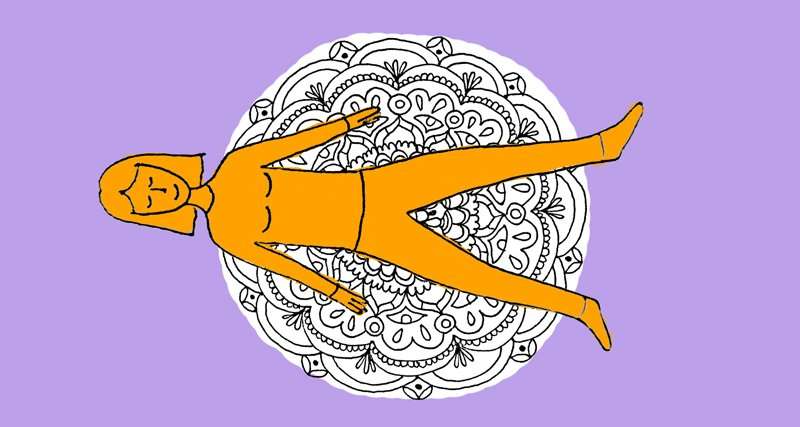 After years of drawing and meditating regularly and seeing incredible benefits from both practices, I discovered that I could make them even more powerful by bringing them together into a single powerful practice: meditative drawing.
After years of drawing and meditating regularly and seeing incredible benefits from both practices, I discovered that I could make them even more powerful by bringing them together into a single powerful practice: meditative drawing.
What is meditative drawing?
Meditative drawing (or drawing meditation) is a visual technique for training attention and awareness, putting the mind in a calm and stable state, and exercising your creative muscle.
This article is for you if you are:
- a beginner meditator exploring fun, creative ways to develop mindfulness,
- an experienced meditator wanting to expand your practice into other areas of your life,
- a creative person wanting to relax your mind and soothe your anxiety,
- someone who wants to expand their journaling practice into new areas,
- someone with no artistic skills (or so you think!) who wants to create beautiful drawings in an easy way.
Meditative Drawing for Anxiety: Does It Really Work?
In case you had any doubts, it’s true: drawing and creating art have been proven to have a positive effect in reducing anxiety and bad mood.
But here is the truth: deep relaxation can only last and anxiety can only truly disappear when you practice mindfulness.
So now imagine—what if we combined both the power of mindful meditation and drawing to achieve peace and relaxation?
Mindful drawing is the answer. Its benefits go way beyond reducing anxiety: it can help you improve your focus, make you a kinder person, deeply change how you see the world, and even be your first step towards Enlightenment.
Art Meets Mindfulness: What Is Mindful Drawing?
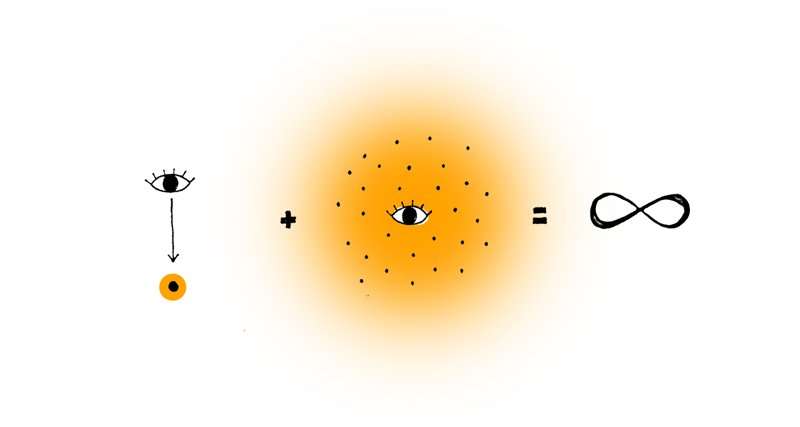
If I could have access to everyone in the world and recommend one single book to them, it would be The Mind Illuminated.
Culadasa (aka John Yates Ph.D., neuroscientist, buddhist meditator, and the author of this incredibly down-to-earth guide to spiritual Awakening) explains that the conscious mind has two ways of processing knowledge: attention and awareness.
Attention is where your focus is. If you would compare it with your eyesight, that would be the words you’re reading in this article right now.
Awareness is what’s being processed in the background. For example, as you read this, you might be aware of the sounds outside, a subtle pain in your upper back, or a growing urge to use the bathroom.
Mindfulness is the optimal relationship between attention and awareness. They are both very important: your awareness scans the environment (both inside and outside your mind) and identifies important things so your attention can focus on them. When the two are balanced, your mind becomes stronger, more stable, and consequently more relaxed.
Mindful drawing uses pen, paper, your breath, and a series of muscles in your body to achieve that state.
As a bonus, you will end up with beautiful drawings and patterns that you can use to embellish your bullet journal or create art—but remember: it’s the process that matters, and the end results are secondary.
Meditative Drawing for Mindfulness: The Basics
The historical Buddha, Siddhãrta Gautama, taught a simple mindfulness practice:
“When walking, walk; when standing, stand; when sitting, sit; when lying down, lie down”.
He could as well have said “when drawing, draw”.
Mindful drawing is an embodied practice. In other words: bring yourself (your mind and your body) to the present moment and get immersed in the act of drawing without doing anything else simultaneously.
Materials for Drawing Meditation:
You can use your journal if the pages open wide enough so your hand won’t be blocked by the crease in the middle (I recommend Leuchtturm1917). If not, just grab a piece of paper and place it on a flat surface.
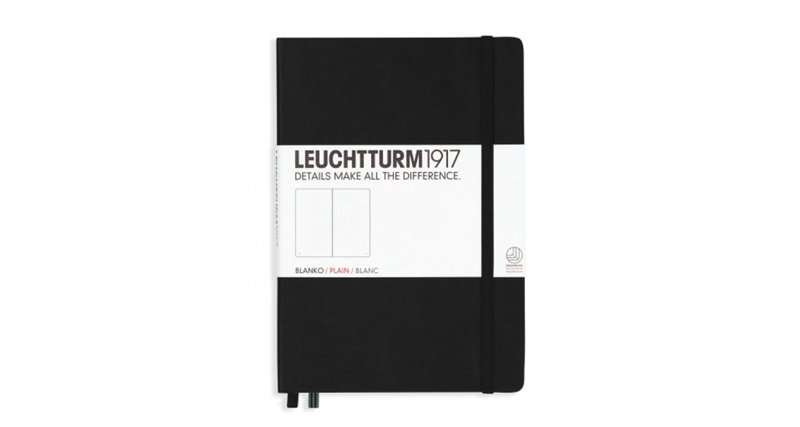
I recommend using a technical pen such as Staedtler Pigment 0.1 because it requires no pressure on the paper like ball-point pens. However, if you don’t have one, it’s better to just use the one you have instead of postponing until you have the “perfect pen”.
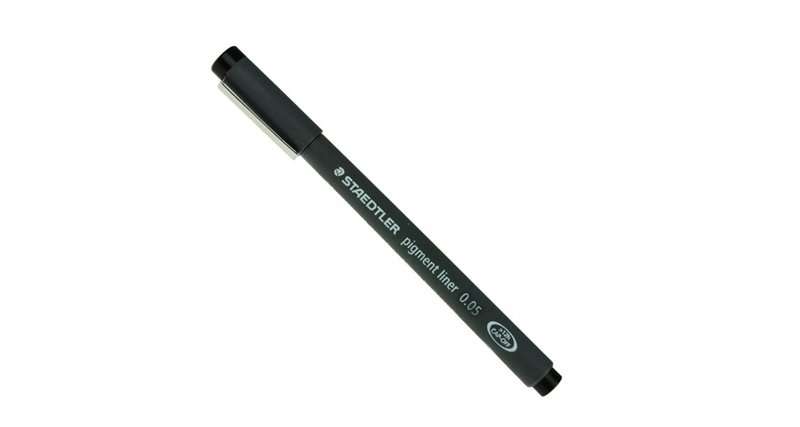
How To Start a Drawing Meditation Session

Gently holding your pen between your fingers and above the paper, bring your attention to your breath.
Without trying to control your breath (without purposefully making it longer or shorter, deeper or shallower), start moving the pen up and down to its natural rhythm, moving from the left to the right side of the page (if you’re left-handed, do it the other way around).
As you do this, focus your attention on the breath (the in-breath, the outbreath, and the pauses in between). Your peripheral awareness should take care of the ink being passed on to the paper, the position and feeling of your hand, and the overall act of drawing.
Remember: don’t try to modify your breath to fit the movements of your hand; instead, let the drawing be a mirror of how fast or slow, deep or shallow your breath feels.
Keep your grip relaxed, and keep your hand and forearm off the paper; this might make your trace a bit shakier at first, but it gives you more freedom (and the shakiness might end up being your personal artistic touch!)
By focusing on your breath and remaining aware of its representation on the paper, there is no space left in your mind for anxious thoughts. This exercise is a perfect warm-up at the beginning of a drawing meditation session.
2. Attention and Awareness Circles
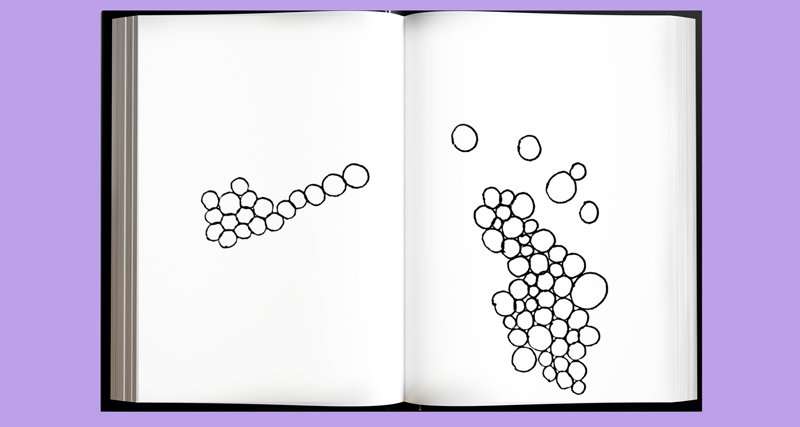
You already know the basics of meditative drawing: sit comfortably, keep your hand relaxed, yada yada yada.
Now, the time has come to increase the conscious power of your brain by increasing the intensity of your attention and the scope of your awareness.
We will do that in a very simple way: by drawing circles.
Here are the rules:
- Always close the circle. Even if it’s imperfect (like an egg or with sharp corners), all that matters is that you close it, because this means that you pay attention to where and when you draw the beginning and the end of each line.
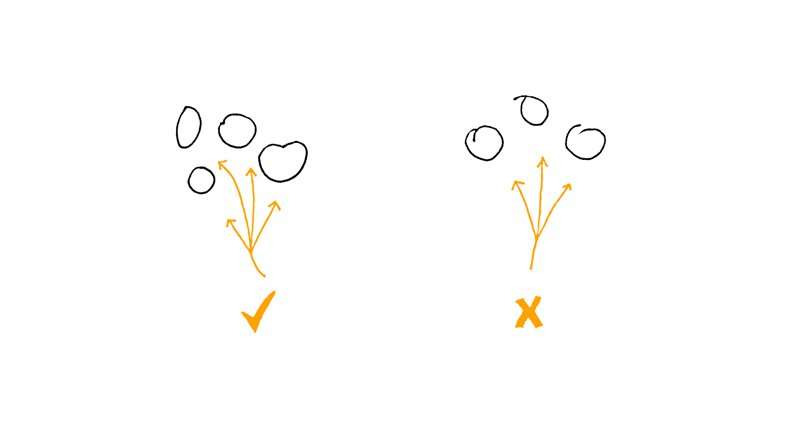
- Keep your eyes focused on the tip of the pen, while remaining aware of the rest of the drawing as it expands.
If you want to take it one level further, when you’re closing a circle, consciously choose the place for next circle you’re going to draw. Then, once you start it, remain aware of the place where you drew your previous circle.
You can also alternate between clockwise and counterclockwise drawing motions, and make that an intentional choice too.
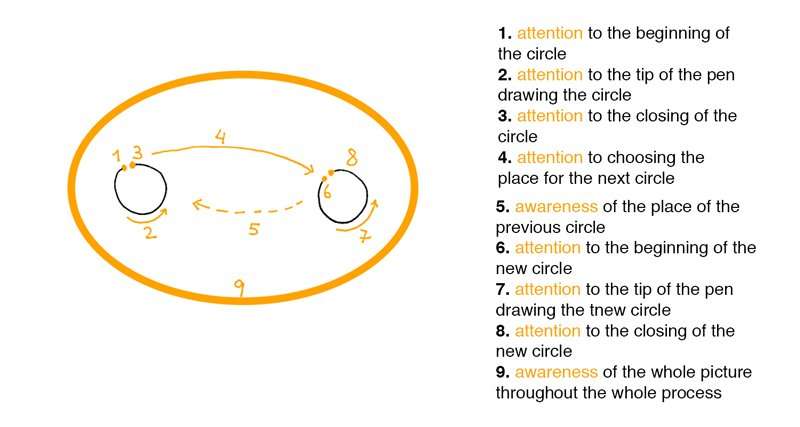
If these last steps are too challenging, don’t worry: keep practicing the simpler version until you feel comfortably mindful, and then increase the difficulty. The more you practice, the sharper your attention will be, and the more opportunities you will find to apply intention and mindfulness.
3. Embodied Mindfulness
Simply level-up the previous exercises by connecting the circles to your breath.
Start the circle in the beginning of the in-breath, reach halfway at the same time as you switch to the out-breath, and end the circle at the end of the out-breath.
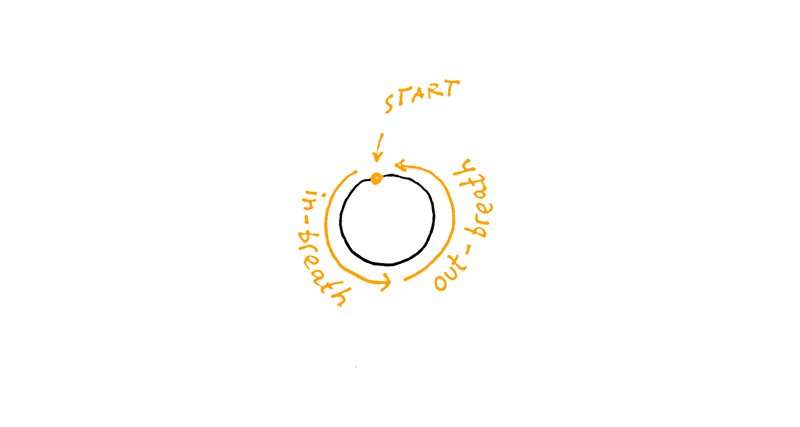
This will expand mindfulness from the confines of the paper and into your physical body—through the breath. Whenever you feel that you’ve nailed this one, you can start becoming aware of different sensations of the breath throughout your whole body (instead of just at the nose), and broaden your awareness once more while you draw the circles.
4. Anxiety In, Anxiety Out
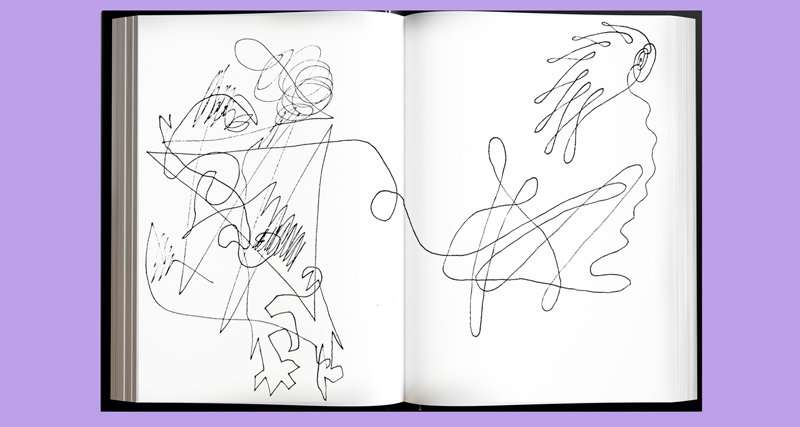
Attention can be directed to any object we choose.
In this exercise, we will use the skills gained in the previous steps and explore our emotional state.
Let’s begin with negative emotions.
If you look deep into the nature of anxiety, agitation, stress, restlessness, you will notice that these states are not real, but simply the absence of something else—calm, joy, fulfillment, certainty.
These “negative” emotions are just like darkness, which has no existence of its own, but is merely the absence of light. Therefore, the key is not to hate them and wish them to go away, but instead to replace them with that which they the absence of.
This is a two-part exercise.
Step 1
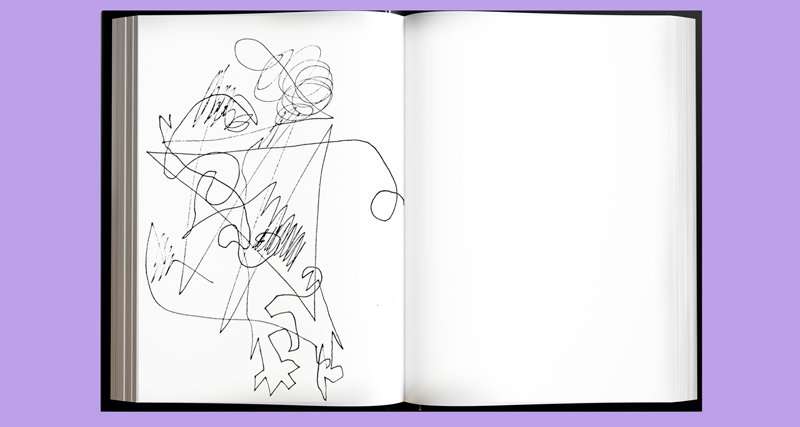
With your hand and body relaxed, focus your attention on how you are feeling. Is there a specific point of resistance in your body? How would you name the emotion—is it anxiety, anger, fear?
Allow your hand to freely express that emotion. If it makes it easier, draw as if you were that emotion. Do it without lifting the pen from the paper—this will remove indecision and keep you focused on the feeling without interruptions.
Step 2
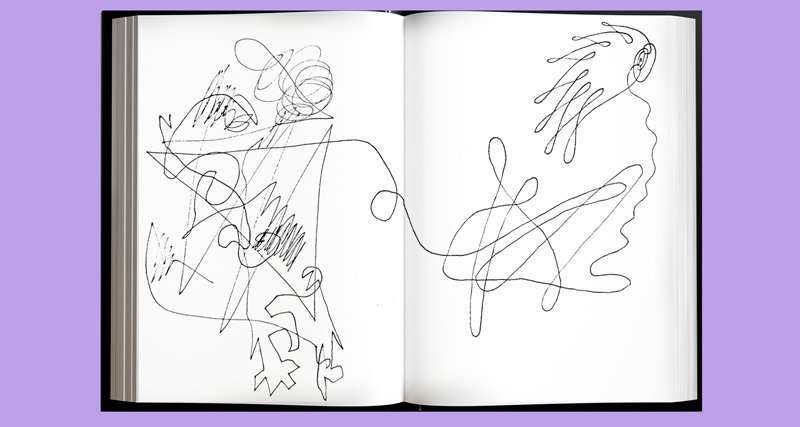
Whenever you feel that you have got a good grip on whatever is bothering you, it’s time to replace it with its opposite.
First, you need to identify it: what is it that you lack that is making you feel these negative emotions? If you’re feeling anger, you might be lacking compassion. If you’re feeling stressed, you might be lacking peace. If you’re feeling agitated, you might just need some comfort, reassurance, or relaxation.
Once you’ve identified the opposite of your resistance, let it take over the drawing. Without stopping the pen, let your new emotion take control of your hand, and see the line transform itself as fills in the “darkness” from your previous emotion.
Does this sound like too much woo-woo for you?
That’s okay—you can skip it. But you’ll be missing out: the reason why most of us are so stressed and tense in the first place is because we are out of touch with our emotions, because we see them as weaknesses to be hidden and controlled.
By making us focus on how we feel, this exercise helps us create self-awareness, and voice parts of us that have been hidden for who knows how long. So let go of self-judgement: express your long-repressed parts by unleashing them onto the paper. The visual results can be surprising and extremely rich!
5. Drawing Mandalas
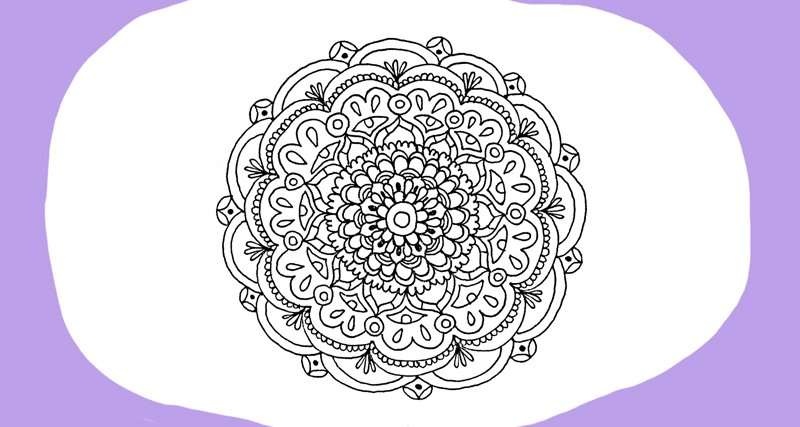
What is a mandala?
The word “mandala” comes from the Sanskrit for circle, and it also encompasses the ideas of wholeness and unity. Carl Jung is credited with using the mandala in therapy sessions—drawing mandalas can be a wonderful tool for emotional expression, self-soothing, and connection to inner calm.

According to art therapist Joan Kellog’s research, our attraction to certain shapes and configurations during the drawing process of mandalas makes them have a strong impact on our physical, emotional, and spiritual condition in that moment.
How To Draw a Mandala
There are plenty of mandala tutorials out there telling you that you need rulers and compasses and all sorts of complex materials for drawing mandalas, but here’s the truth:
Drawing mandalas is the most fun when you do it free hand.
The purpose of these exercises is to cultivate mindfulness, so we don’t care about perfection—all we care about is the process.
Here’s how to draw a mandala free hand:
- Start with the center. I recommend starting with a small circle or two.
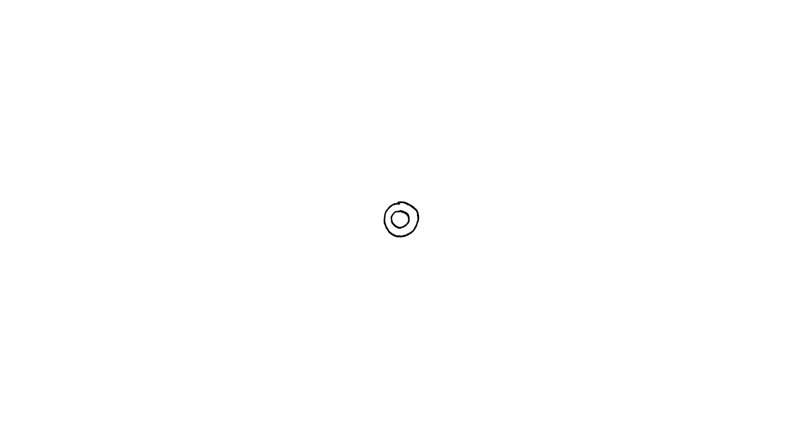
- Start adding elements from the inside out. It’s easier to keep symmetry on a small scale, so by drawing layer by layer, you can keep your mandala balanced even without using a ruler or a compass.
- While you draw, try to focus your attention on the tip of the pen and the small part you’re currently drawing.
- Simultaneously, keep your awareness open to encompass the whole mandala—this will train you to draw more proportionately, as well as keep your attention to drift to unwanted thoughts.
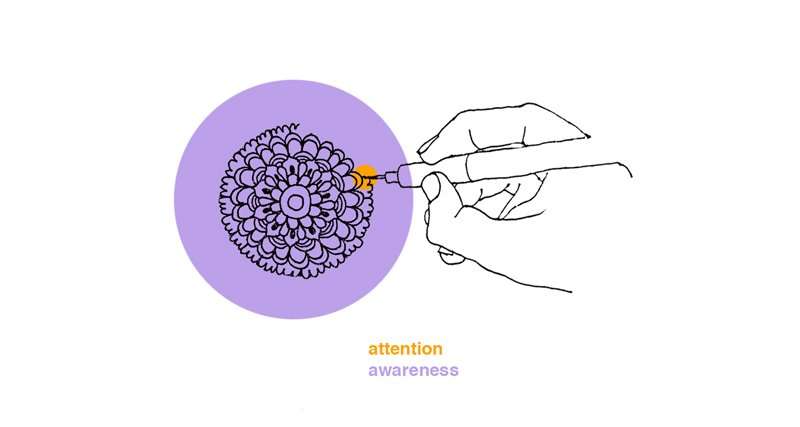
- Add any elements of your choice. You can use the mandala to express your emotions, your creativity, to draw patterns that soothe you, or simply for the pleasure of creating aesthetic beauty. Here are a few examples of patterns you can use:
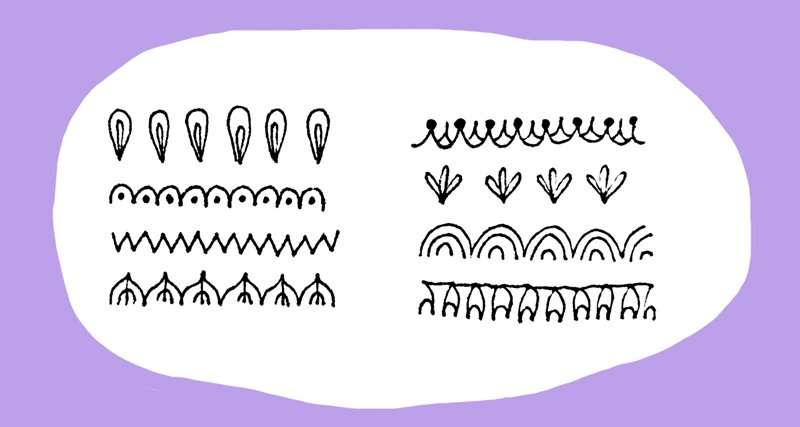
In Tibetan Buddhism, drawing mandalas is a form of prayer. In the end, whether it’s with mandalas, with drawing, or with any other activity in life, the results often matter less than the process: your state of mind, what you feel while you’re drawing, your intention, and the quality of your presence.
6. Zentangles: Easy Patterns for Drawing Meditation
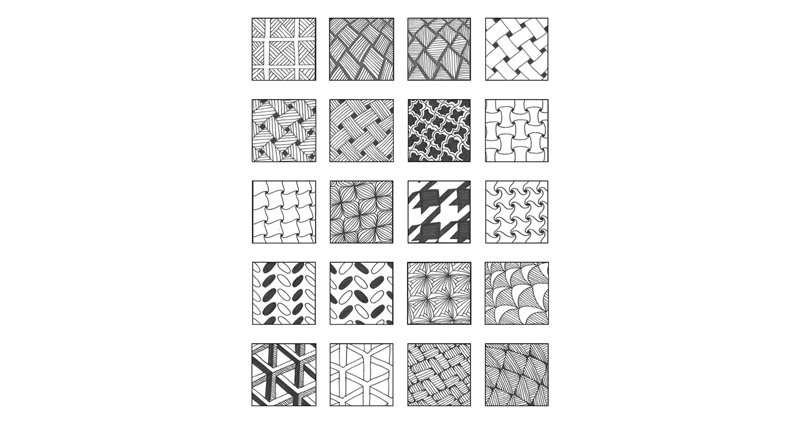
Image source.
The Zentangle method is an “easy to learn, relaxing, and fun way to create beautiful images by drawing structured patterns” called tangles. Some of its benefits include areas such as phobias, addictions, conflict resolution and workplace burnout.
The method has become extremely popular due to how easy and relaxed it makes it to be creative.
How to make a Zentangle? The steps include starting with gratitude and appreciation, then drawing four corner dots on a small square paper, connecting the dots to draw the borders, then drawing shapes and finally filling in the shapes with whatever patterns or shapes you wish.
Zentangles are a great way to apply mindful drawing to a more complex and creative structure. There are countless patterns you can inspiration from, and if you want to learn more about the methodology, click here.
Meditative Drawing Is Awesome
Whether you want to become more mindful, calmer, more focused, or simply find new ways to develop your spiritual practice, meditative drawing will surely rock your world.
Start simple to learn the basics, and then progress onto the more complex forms such as mandalas. Once you get your mind and body in the right space, the beauty of your drawings will surface as a consequence, and you’ll enjoy your practice more and more.